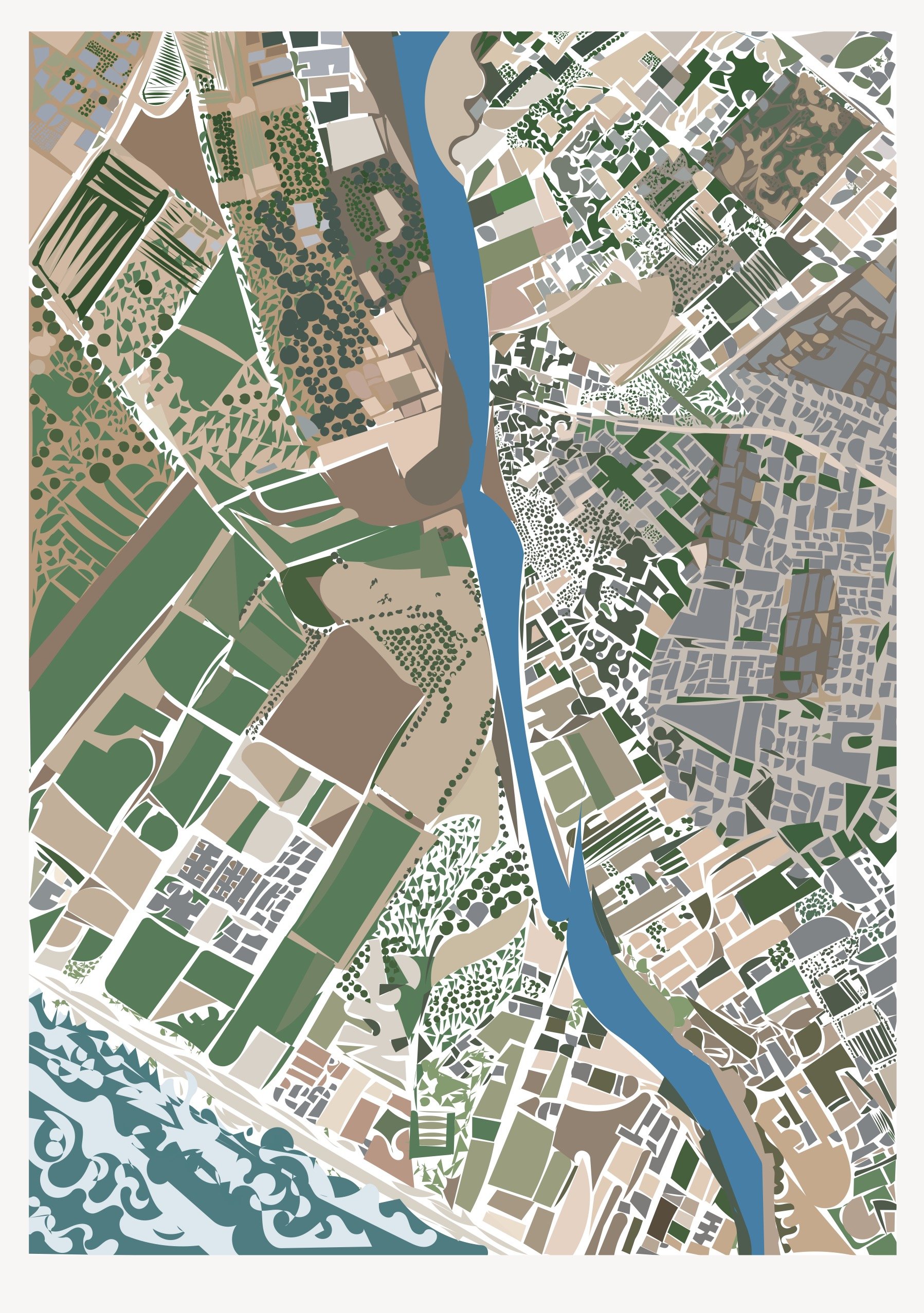Wadi Ghaza
Wadi Gaza is one of the most significant coastal wetlands along the Eastern Mediterranean, recognized for its rich biodiversity, including a wide range of flora and fauna. Historically, it has also served as a critical stopover point for migratory birds traveling along their routes between north and south. Beyond its ecological importance, Wadi Gaza stands out as the largest wetland in Gaza and one of the largest in Palestine, with its unique and striking landscape. It holds the potential to become a recreational space, attracting visitors from various areas and serving as a resource for both the environment and local communities. However, the threats to this habitat are severe. Over the years, Wadi Gaza has been increasingly affected by environmental degradation, public health crises, and misuse, such as its transformation into a site for sewage dumping from nearby refugee camps and a solid waste disposal area.
This decline is deeply tied to the broader context of Israeli blockades and the ongoing occupation of Gaza. Restrictions on water flows and the lack of proper environmental management have exacerbated the situation, reducing a once thriving ecosystem into a wasteland. Despite these challenges, the people of Gaza have repeatedly demonstrated resilience and determination. Over the past 75 years, Wadi Gaza has gone through cycles of devastation and revival, with local efforts aimed at restoring its ecological balance and ensuring its sustainability. For example, in 2021, wastewater treatment initiatives succeeded in allowing cleaner water to flow back into the valley. This marked a step toward the Wadi’s renewal, offering hope not just for the environment but also for improving livelihoods in one of the world’s most densely populated areas. The revival of Wadi Gaza is more than an an environmental issue—it represents a broader struggle to restore dignity, heritage, and a sense of place amidst continuous challenges.
My project delves into the layered history and significance of Wadi Gaza, examining it as a site that bears witness to the enduring struggles and resilience of
the Palestinian people. Through film and drawings, I explore the Wadi’s transformation over time, highlighting its role as both a physical landmark and a symbol of resistance. The project reflects on the relationship between the landscape and the communities that have lived around and through it, using the Wadi as a narrative thread that connects past and present. The land itself becomes an archive, holding stories of destruction and survival, loss and revival.
The film is designed as an interactive experience that invites viewers to engage directly with the timeline of Wadi Gaza’s evolution. Archival material—including statistics, images, videos, and articles—traces how the Wadi has repeatedly been revived and revitalised by the efforts of local communities. Alongside these materials, the film incorporates sensory elements such as Palestinian poetry, interviews, audio recordings of the sea and birds, and traditional music.
These cultural elements evoke the Wadi’s deep ties to Palestinian heritage, underscoring its symbolic role as a site of hope and return. A central visual strategy is the manipulation of footage: looping, reversing, and speeding scenes of water flowing between the sea and the Wadi. This editing technique mirrors the cyclical nature of destruction and revival and serves as a metaphor for the resilience and enduring the hope of the Palestinian people.
The drawings extend the narrative of the film by focusing on specific aspects of
Wadi Gaza from different perspectives and scales. The first two drawings address
the destruction and damage surrounding the Wadi. One provides an aerial view
of the area, mapping erasure and bombings using faded colours and white
markers, which symbolize voids and the scars of violence.
The second offers a
closer view of the present-day village of Nuseirat, which lies near the Wadi and
has been heavily bombed. The focus on the camp, established in 1948, highlights
its history as a site of displacement and its continued vulnerability.
In contrast, the third drawing shifts to observe the ecological richness of the
Wadi, showcasing its biodiversity through vibrant colours and textured shapes. This
drawing highlights specific flora found in the region, such as Bermuda Grass
(Cynodon dactylon), a vital grazing resource, and the Castor-oil Plant and Gum
Arabic Tree, both of which contribute to the local ecosystem. By contrasting the
vibrancy of this drawing with the desolation depicted in the others, the work
underscores the duality of the Wadi—as both a site of devastation and a symbol of
life and renewal.



